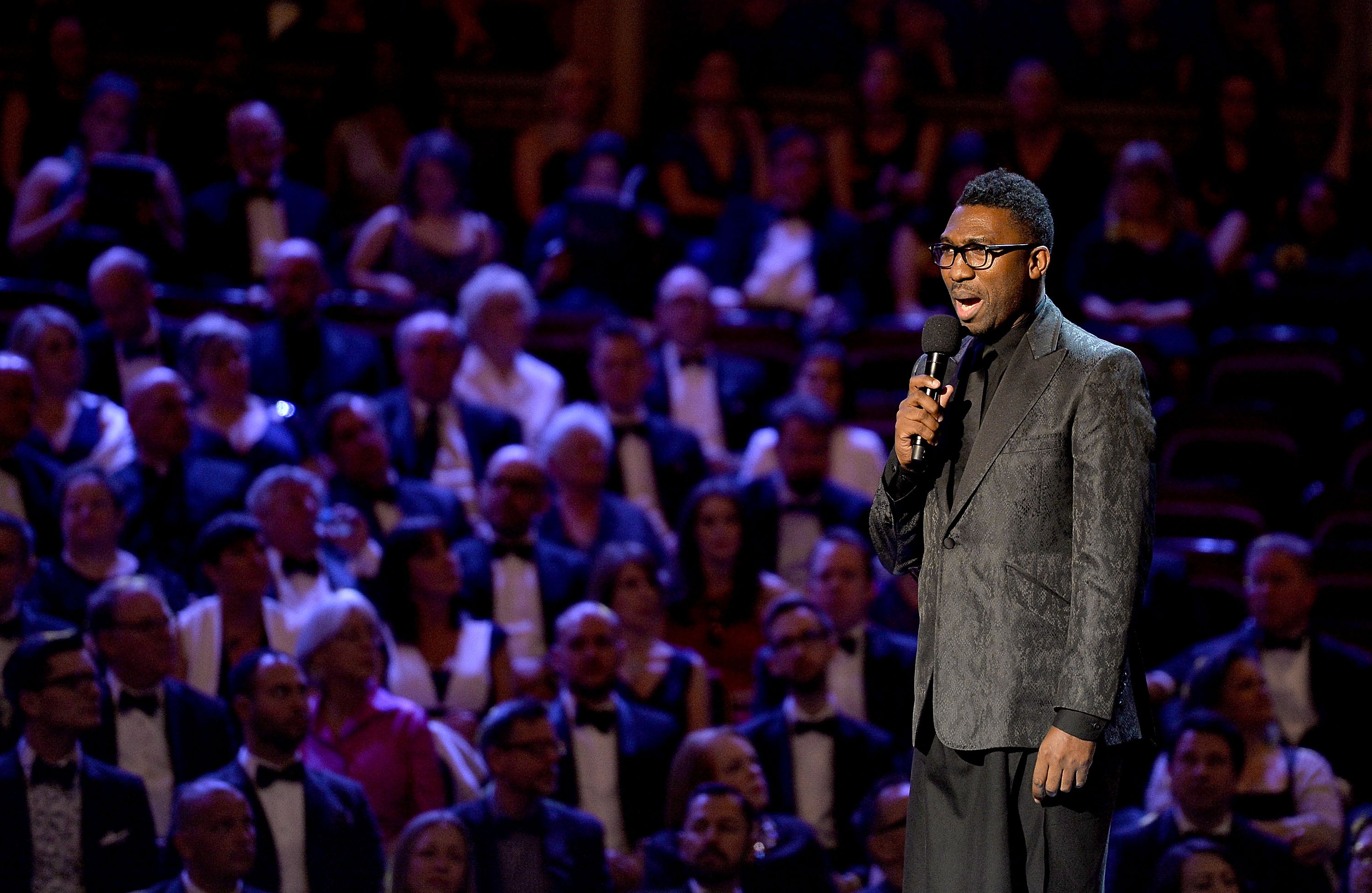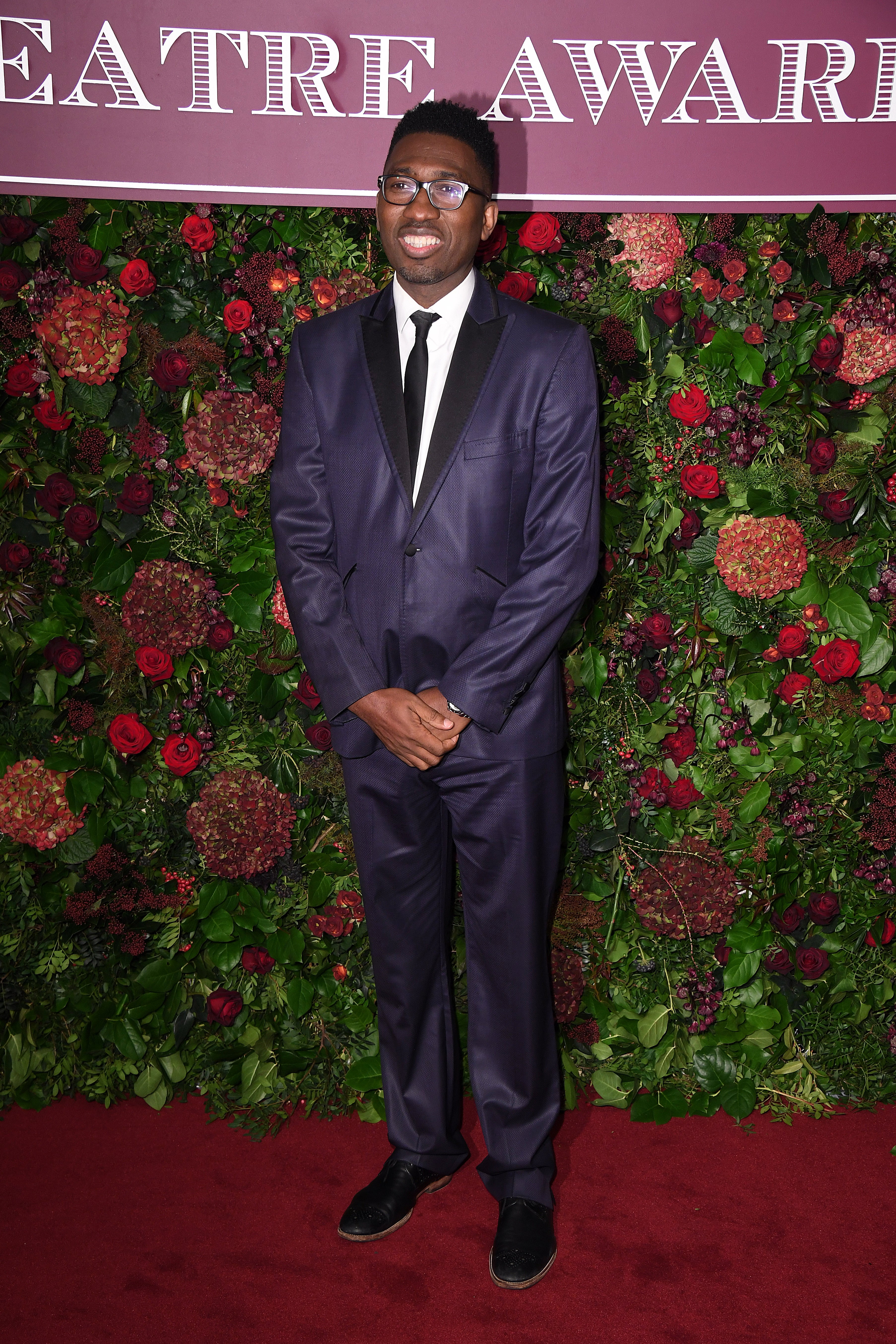Shakespeare, Louis Armstrong and the resurrection of a failed play
A 1939 show based on ‘A Midsummer Night’s Dream’ starring Louis Armstrong and swing music – what could go wrong? It was panned by critics and dissappeared into obscurity, but now Kwame Kwei-Armah tells Elisabeth Vincentelli why he’s bringing it back

Your support helps us to tell the story
From reproductive rights to climate change to Big Tech, The Independent is on the ground when the story is developing. Whether it's investigating the financials of Elon Musk's pro-Trump PAC or producing our latest documentary, 'The A Word', which shines a light on the American women fighting for reproductive rights, we know how important it is to parse out the facts from the messaging.
At such a critical moment in US history, we need reporters on the ground. Your donation allows us to keep sending journalists to speak to both sides of the story.
The Independent is trusted by Americans across the entire political spectrum. And unlike many other quality news outlets, we choose not to lock Americans out of our reporting and analysis with paywalls. We believe quality journalism should be available to everyone, paid for by those who can afford it.
Your support makes all the difference.“It’s almost like a kind of murder mystery,” Kwame Kwei-Armah says with obvious relish. “The play was butchered by the press, and somehow the body has disappeared.”
The case the artistic director of London’s Young Vic Theatre was referring to is a Broadway show called Swingin’ the Dream. Set in 1890 Louisiana, this “musical variation of Shakespeare’s A Midsummer Night’s Dream”, as it was billed, ran on Broadway for just 13 performances at the end of 1939, then sunk without a trace. The script itself is lost, save for a few pages from the Pyramus and Thisbe section.
So you have to wonder why prominent institutions – the Royal Shakespeare Company and the Young Vic in Britain and New York’s Theatre for a New Audience – would team up to revisit a theatrical footnote for a long-term project, which kicked off last Saturday with a livestream concert of popular jazz tunes that comprised the score.
Once you begin digging, however, you have to wonder how not to be drawn to Swingin’ the Dream, which sat at the centre of a complicated network of racial and cultural influences.
Let’s start with an integrated cast of about 110 — you read that right — which included Louis Armstrong as Bottom; Butterfly McQueen and Oscar Polk, fresh from the Gone With the Wind set, as Puck and Flute; comedian Moms Mabley as Quince; singer Maxine Sullivan as Titania; and future Oscar nominee Dorothy Dandridge as a pixie. The Benny Goodman Sextet and Bud Freeman’s Summa Cum Laude Orchestra supplemented the pit musicians. (According to Ricky Riccardi’s recent book, Heart Full of Rhythm, Armstrong and Goodman fought over who would get top billing and ended up sharing it equally.)
And there was more: Agnes de Mille handled the choreography; the sets were inspired by Walt Disney cartoons; and the score burst with popular jazz tunes, as well as new ones like Darn That Dream by Jimmy Van Heusen and Eddie de Lange.
Yet this abundance of talent did not guarantee success. The reviews were mixed at best, and did not help fill the 3,500 seats of the Centre Theatre – even with a top ticket price lowered to $2.
The show quickly faded into oblivion, though Darn that Dream has become a concert favourite, sung by Billie Holiday and Nancy Wilson, among many others.
It will be part of the concert, which features a cast of RSC ensemble members and jazz performer Zara McFarlane.
“‘Darn that Dream’ is a really important jazz standard that I play and accompany people with, so not to know its roots in a very important production, which they put so much money into, was really surprising,” says Peter Edwards, the concert’s music director, who only heard of Swingin’ the Dream when the RSC contacted him.
Most of the reviews complained that there was too much Shakespeare and not enough swing, with Armstrong wasted in a role that did not require him to blow his horn
The project was set in motion well before the pandemic, and the heads of the three theatres aren’t sure what form it will take beyond the concert this weekend. But a full remount of the show sounds less likely than a forensic dive – think “CSI: Times Square”. The George C Wolfe meta-show Shuffle Along, or, the Making of the Musical Sensation of 1921 and All That Followed, which had a brief but acclaimed Broadway run in 2016, may provide a possible direction.
“I just want to know what happened, why that line-up crashes, and then why the show seems so entirely to disappear,” says Gregory Doran, artistic director of the Royal Shakespeare Company.
Black newspapers at the time were among those divided on the show. An article in The Pittsburgh Courier praised a “mighty mélange of music, mirth and mellow musing”; another noted the many employment opportunities for Black performers.
The New York Amsterdam News, on the other hand, wondered if encouraging what it deemed a subpar effort would only delay “the day when Negro actors and Negro art will be recognised without lampooning and burlesque.”

“The critics are telling us that it did not hang together, that the mash-up did not work,” Kwei-Armah says. “I’m interested in why it didn’t work. Also, just because they said that it didn’t work doesn’t mean that it didn’t work!”
The locomotive pulling the train and its many, many wagons was Erik Charell, a gay, Jewish director-producer of revues who had resettled in the US after fleeing Nazi Germany, and a fascinating character in his own right. His Broadway directing debut, in 1936, was an adaptation of his hit Berlin operetta White Horse Inn with a cast of 145 – no wonder he was nicknamed “the Ziegfeld of the German musical comedy stage”.
Charell might have wanted to capitalise on the success of The Swing Mikado (1938) and The Hot Mikado (1939), two jazz-flavoured adaptations of the Gilbert and Sullivan operetta, but he was not quite ready for the thorny issues and challenges raised by an integrated show in pre-World War II America.
“Clearly he is the man of the moment, he’s got the Midas touch,” Doran says of Charell. “But is what he does an exploitation of that talent or a visionary piece of thinking?”
Since Charell was a “stranger to our native idiom”, as a preview in The New York Times put it, he enrolled as co-writer American critic Gilbert Seldes, an early champion of popular culture.
For Jeffrey Horowitz, founding artistic director of Theatre for a New Audience, not bringing in a Black co-writer was a big missed opportunity. “There’s no person in that writing team who knows anything about African American culture and jazz,” he says. “They could have had Langston Hughes, they could have had Zora Neale Hurston. I don’t think they even thought of that.”
The racial and artistic dynamics at play in Swingin’ the Dream provide a precious glimpse into the commonplace misconceptions and hang-ups that shaped early 20th century American culture. The white cast members played the aristocrats and lovers, for example, while the Black performers handled the fairies and mechanicals – comic entertainers, not romantic leads.
Another fascinating juxtaposition happened with the dancing, since De Mille’s choreography was supplemented with jitterbugs devised by the king of Harlem ballrooms, Herbert White, who brought along his troupe.
Most of the reviews complained that there was too much Shakespeare and not enough swing, with Armstrong wasted in a role that did not require him to blow his horn. The producers frantically tried to adapt and eventually gave their star more time on the trumpet. Alas, nothing worked, and Swingin’ the Dream closed.
Now all that remains is an alluring enigma, one whose making-of story has become more compelling than the final product.
“Even if tomorrow the script turned up, we wouldn’t be interested in it,” Horowitz says. “The real thing is about something else – it’s about race, and context, and who’s telling whose story.”
© The New York Times




Join our commenting forum
Join thought-provoking conversations, follow other Independent readers and see their replies
Comments